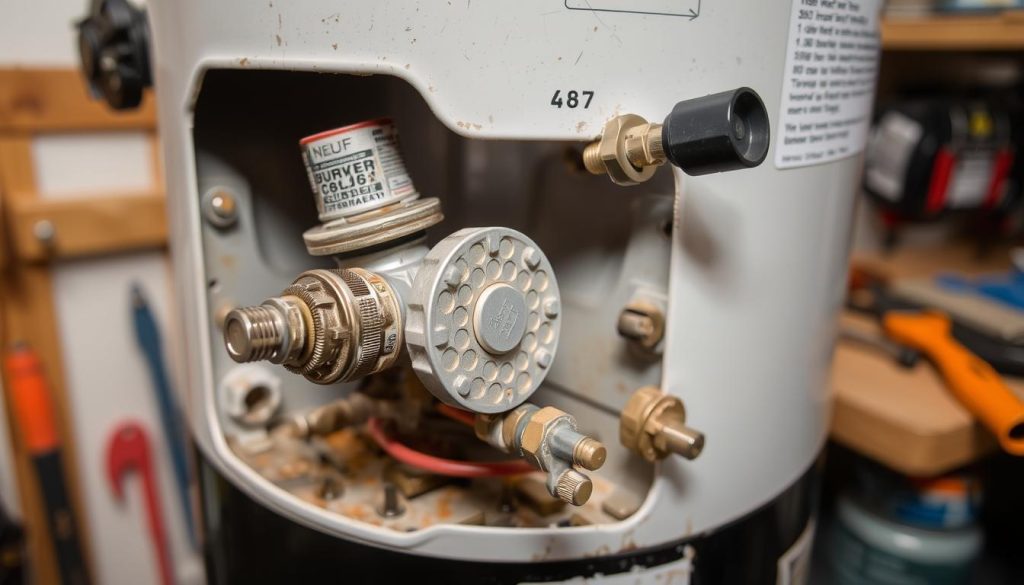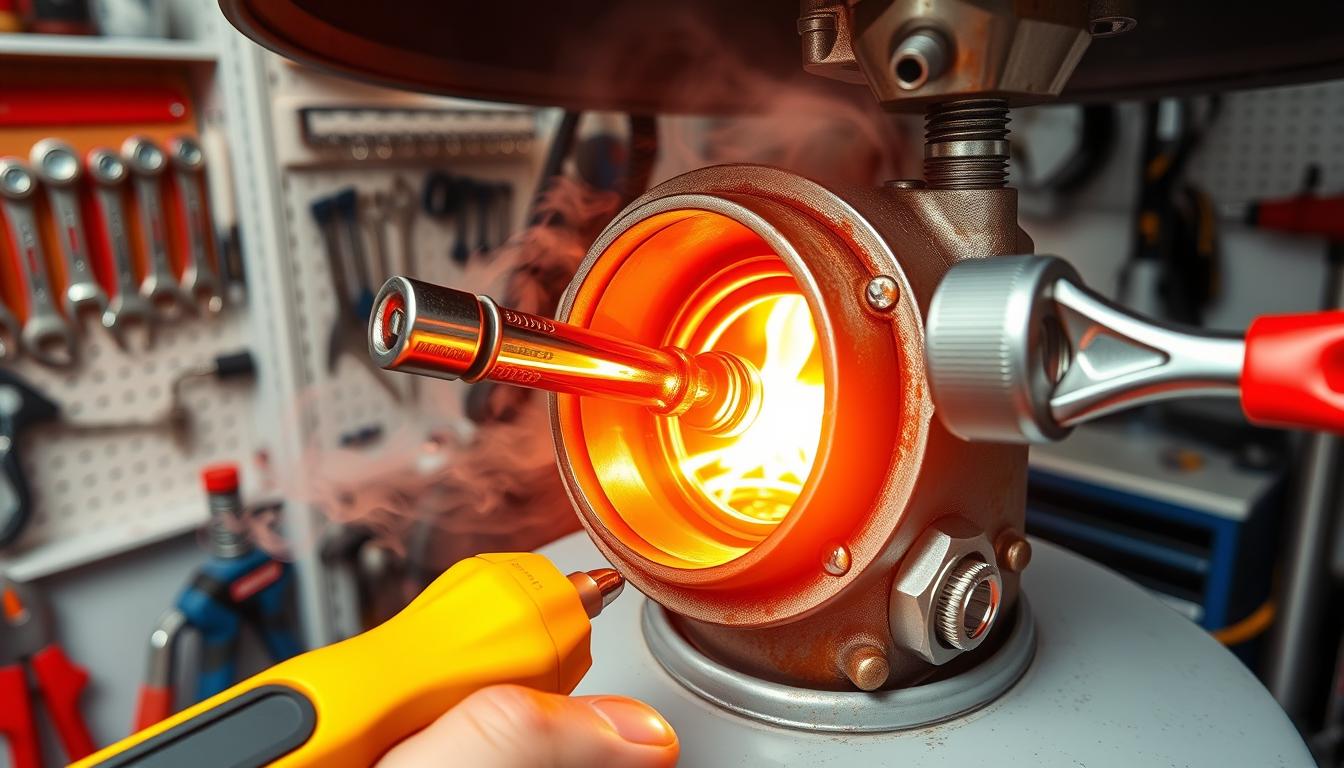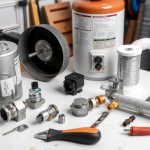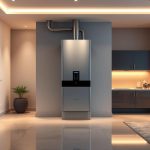Faulty water heater burner assemblies cause 7% of home heating system failures yearly. Understanding your water heater’s burner assembly can save you money and time. It helps prevent unexpected repairs and keeps your system running smoothly.
The burner assembly is crucial for your gas water heater. It creates heat and ensures a steady supply of hot water. Knowing how to fix issues with the gas valve, pilot light, or thermocouple is vital.
This guide explores water heater burner assembly maintenance. It offers expert tips and practical solutions for homeowners. Whether you’re a DIY fan or need professional help, you’ll find useful information here.
Key Takeaways
- Learn critical components of water heater burner assembly
- Understand diagnostic techniques for common heating issues
- Recognize signs of burner assembly wear and deterioration
- Discover cost-effective replacement strategies
- Gain confidence in managing water heater maintenance
Understanding Water Heater Burner Assembly Components

The burner assembly is key to water heater maintenance. Each part plays a vital role in safe and efficient heating. Knowing these components helps you spot issues early.
Gas Valve and Control System Essentials
The gas valve controls gas flow in water heaters. It manages how much gas enters the burner tube. It also sets the temperature precisely.
Modern gas valves have advanced safety features. These prevent gas leaks and control the combustion chamber. They also monitor gas pressure for optimal performance.
- Monitors gas pressure
- Regulates temperature settings
- Provides safety shutdown mechanisms
Pilot Light and Thermocouple Dynamics
The pilot light and thermocouple work together for safety. The thermocouple creates a small electric signal. This signal keeps the gas valve open.
This team ensures a constant flame during water heating. Their proper function is crucial for preventing gas-related dangers.
“A properly functioning pilot light and thermocouple are essential for preventing potential gas-related hazards.” – HVAC Safety Experts
Burner Tube and Orifice Mechanics
Burner tube and orifice design affect combustion efficiency. The orifice controls gas flow rate. The burner tube spreads the flame evenly.
| Component | Function | Performance Impact |
|---|---|---|
| Burner Orifice | Gas flow regulation | Precise fuel mixture |
| Burner Tube | Flame distribution | Uniform heating |
| Combustion Chamber | Heat generation | Energy efficiency |
Knowing these parts helps with better water heater care. It allows you to spot potential issues quickly. This knowledge leads to more effective maintenance.
Step-by-Step Water Heater Burner Assembly Replacement

Replacing a water heater’s burner assembly is doable for homeowners with basic mechanical skills. Gather essential tools and take safety precautions before starting. This task requires careful attention to detail.
Safety comes first in water heater maintenance. Follow these crucial steps:
- Shut off the gas supply completely
- Turn off the water heater’s power source
- Allow the water heater to cool down
- Wear protective gloves and safety glasses
You’ll need specific tools for this job. These tools help with gas valve and thermocouple work.
| Tool | Purpose |
|---|---|
| Adjustable wrench | Removing gas valve connections |
| Screwdriver set | Disconnecting burner assembly components |
| Pipe brush | Cleaning burner tube |
The replacement process involves removing the old burner assembly. Follow these steps carefully:
- Disconnect the gas valve connections
- Remove the thermocouple carefully
- Unscrew and extract the old burner assembly
- Clean the burner tube and mounting area
- Install the new burner assembly
- Reconnect the gas valve and thermocouple
“Precision and patience are key to successful water heater repair” – Professional HVAC Technician
After installation, do a thorough leak test. Make sure the ignition works properly. Professional assistance is recommended if you encounter any complications during the process.
Conclusion
Regular inspection of your water heater’s burner assembly is crucial. Check the combustion chamber and key parts often. This can greatly extend your system’s lifespan.
Create a routine to check for wear and corrosion. Ensure proper alignment of the burner assembly. This proactive approach can prevent many issues.
For complex problems, seek professional help. Certified techs have the skills to tackle tricky burner assembly issues. They can ensure your system stays safe and efficient.
Prevention is key for water heater longevity. Schedule yearly pro inspections and clean important parts. Address small issues quickly to avoid big breakdowns.
Learn about your water heater model’s specific needs. Follow the maker’s advice for best performance. This knowledge helps you keep your system running smoothly.
Proper care of your water heater’s burner assembly is a smart investment. Stay alert and address maintenance needs promptly. This ensures reliable hot water and a longer-lasting heating system.



